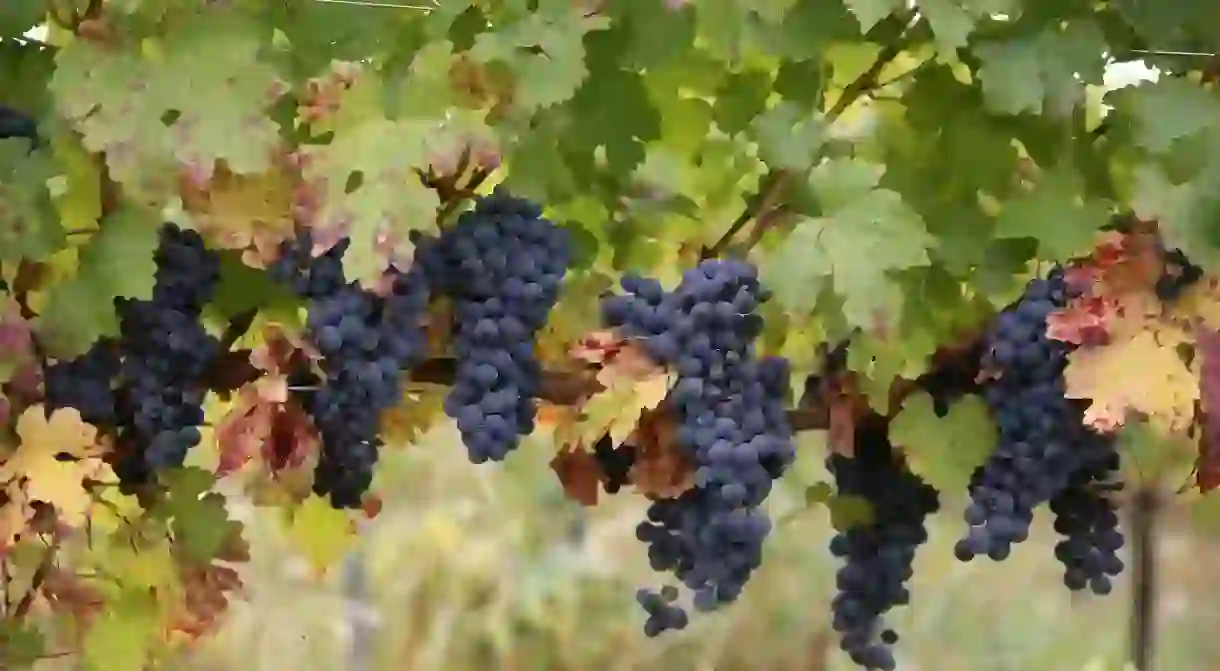The Best Wine Types from Local Romanian Grapes

Romania has a winemaking tradition spanning two millennia. Currently ranked 13th worldwide according to the quantity of wine it produces, the Eastern European country has a wealth of local grape varieties that produce some of the best wines around. With over 100 new wineries having popped up just in the past five years, the Romanian wine industry is making a comeback true wine lovers should not miss out on.
Feteasca Regală
A white grape variety, Feteasca Regală is one of the best known Romanian grape types. Native to the region of Transylvania, where it is still cultivated on a large area, it was discovered in the 1930s near Sighișoara. A natural cross between Feteasca Albă and Grasă de Cotnari, it can produce high quality dry and fresh wines with an excellent ageing potential. A semi-aromatic variety similar to Chardonnay, when aged in barrels, Feteasca Regală acquires hints of rose, wild flowers, almond or dried apricots.
https://www.instagram.com/p/BY7nrGsj3aa/?tagged=feteascaregala
Feteasca Neagră
This ancient grape variety was already cultivated 2,000 years ago by the Dacians, the ancestors of today’s Romanians and forefathers of the Romanian wine industry. Traditionally grown on large surfaces in southern Moldavia and eastern Wallachia, today it is spread throughout the country. Producing dry red and rosé wines with complex aromas, it develops wild quince, red berries or ripe plum aromas, and tannins that become velvety with age.
https://www.instagram.com/p/BbVJtdilWYH/?tagged=feteascaneagra
Feteasca Albă
A clonal variation of the indigenous variety Feteasca Neagră, this white grape variety is grown in most regions of the country, and yields medium-sized grapes with medium-small yellow-green round berries. Producing high quality balanced wines with a touch of finesse and a great ageing potential, Feteasca Albă will charm you with its scents and flavours that include citrus fruit, linden flowers and can evolve towards wild flowers, hay or ripe apricot.
https://www.instagram.com/p/BZEqEwZh_jO/?tagged=feteascaalba
Crâmpoșie Selecționată
The origins of Crâmpoșie Selecționată can be traced back to more than two millennia ago, when the Dacians inhabited much of Romania’s territory. Perfectly adapted to the famous winemaking region of Drăgășani, is was created by local researchers as an answer to the original Crâmpoșie variety’s sterility problems. As an auto-sterile variety, meaning that the grape flowers cannot bear fruit without being pollenated, it was usually cultivated alongside another Romanian variety, Gordan, which acted as a pollinator. Via direct sexed hybridisation, researchers obtained the Crâmpoșie Selecționată variety, which features medium–large sized grapes with round, medium-sized grapes that catch a slight rusty colour as they ripen. Due to its high acidity and sugar content, this grape variety produces high quality sparkling wines with hints of apple, pear, citrus, exotic fruit and mineral notes.
https://www.instagram.com/p/BcHaNqbA12U/
Tamâioasa Românească
Grown in Romania for 2,000 years, Tamâioasa Românească likely has its origins in the Muscat variety probably native of Ancient Greece. The middle-sized grapes feature dense golden berries with a bold aroma. An excellent appetiser, Tamâioasa Românească develops an intense floral bouquet with hints of basil, ripe apricot, pear, melon or pineapple.
https://www.instagram.com/p/BcHcMafh0ox/
Negru de Drăgășani
A new addition to the list of local Romanian grape varieties, Negru de Drăgășani produces medium-sized, egg-shaped blue to black berries. This grape variety was developed in the historic winemaking region of Drăgășani as a result of the sexual hybridisation of the Romanian variety Negru vârtos variety with Saperavi, a grape native to Georgia. The wines, with soft tannins, stand out through their freshness and fruitiness and are well suited to ageing in oak barrels and bottle. Flavours range from black cherry, blackberries and spices.
https://www.instagram.com/p/BZlwSlKhnyO/?tagged=dragasani
Băbeasca Neagră
The Băbeasca Neagră variety dates since the 14th-century approximately, and is known in other parts of the world, where it is known by a local name. Traditionally grown in the Nicorești winery, its birthplace, over the years it spread to southern Moldavia, Vrancea, Dealu Mare, Dobrogea and Banat. With sparse, dark blue and purple berries, this grape variety produces light, flavoursome wines with high acidity and hints of bitter morello, dried plums, plus flowery flavours of peony, violet or iris.
https://www.instagram.com/p/BLBj8UkBfOw/?tagged=babeascaneagra
Grasa de Cotnari
Native to the Cotnari vineyard, in Moldavia, Grasa de Cotnari is perhaps one of the most famous Romanian grape varieties. Producing large grapes with medium to large conical grapes with thin light green skin, it results in a range of dry and semi-dry to sweet and noble sweet wines. The wines pack a strong flavour and develop hints of peach, honey and apple, in the case of dry types, and raisins, green walnut and almond, in the case of sweet wines.
https://www.instagram.com/p/tE-TlugVNe/?tagged=grasadecotnari
Busuioaca de Bohotin
Native to Ancient Greece, Busuioaca de Bohotin was discovered in the 1920s in Bohotin, in the Iași region of Moldavia. It grows middle-sized grapes with small medium thin-skinned purple grapes. The wines are sweet and well-balanced with high acidity, similar to Muscat wines, and come in a very dark purple colour. The flavours range from rose, basil, strawberry and wild strawberry.
https://www.instagram.com/p/tFamhlTW_l/?tagged=busuioacadebohotin
Galbena de Odobești
Once a widespread grape variety, Galbena de Odobești is exclusively grown in four winemaking centres in Vrancea. Featuring medium-sized grapes with dense, golden yellow berries that acquire rusty shades when ripe, it produces dry, light and fresh wines that are usually put for consumption after the first year.
https://www.instagram.com/p/7aoZWChvji/?tagged=galbenadeodobeşti













